Your Ultimate Guide to Airport Advertising & Digital Amplification in India (2025 ed.)

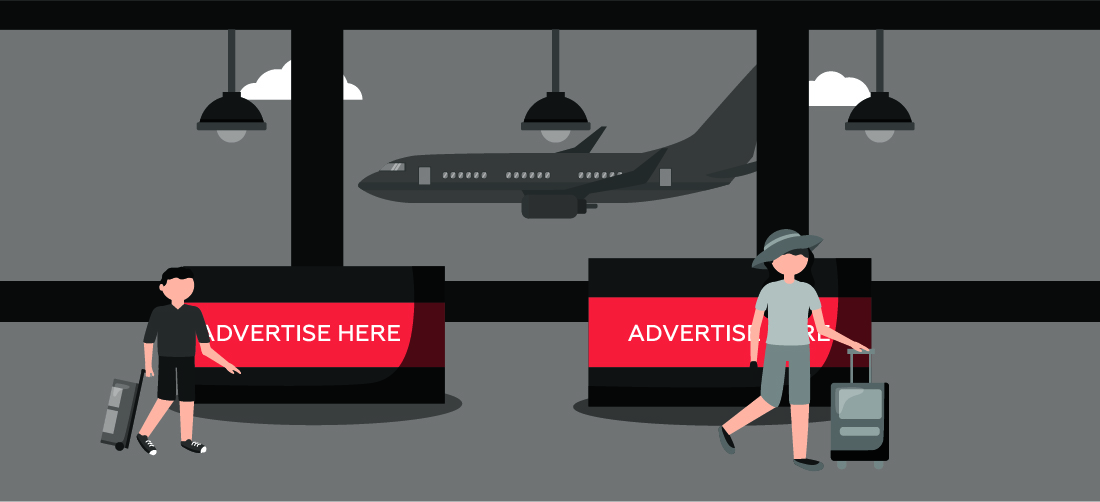
Your source for all things airport advertising in India, including media formats, costs, digital screens, DOOH updates, and campaign techniques that work! India's Passenger Boom: Why Airport Advertising Captures Premium Reach.
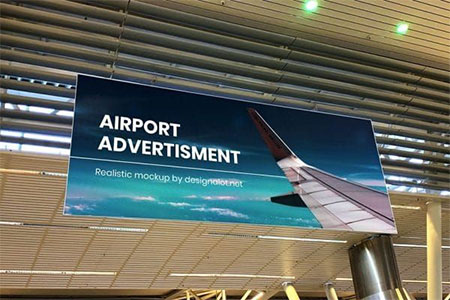
India's aviation industry is exploding. More than 174 million passengers, domestic and international, came and went in 2024, making India one of the top three aviation countries in the world. By then, domestic travel alone was getting close to 14 million flyers per month. The government is planning to respond to the boom with significant airport expansions, and is projecting to increase from 157 airports in 2024 to 350–400 airports in 2047.
What does this mean for marketers?
- High-value, influential audience: Air travelers are not typical consumers, and at major airports, passengers on average earn approximately $160K and often are business owners or decision-makers. Your brand isn't just seen, it's seen by the right person.
- Time-rich, distraction-free window: Before takeoff, travelers spend an approximate of 60–120 minutes navigating check-in, security, lounges, and gates. This is uninterrupted time with your brand. Smartphone-powered follow-up: Everyone’s got a phone in hand. That means you can run integrated campaigns, start with a striking screen ad at the airport, then retarget the same person with Google or Meta ads mid-flight or post-landing. Airports aren’t just physical spaces, they’re digital touchpoints too.
Airport Advertising Inventory & Formats
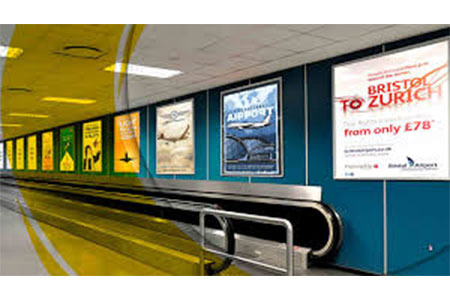
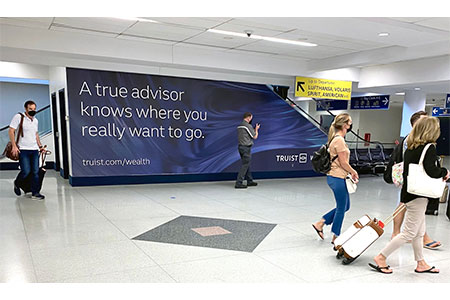
| Formate | Typical Location | Avg. Exposure | Best for |
|---|---|---|---|
| Digital LED Video walls | Check-in island, gate hold rooms | ~ 6-30 Seconds per loop | Immersive storytelling product launches |
| Programatic DOOH Screens | Throughout Terminal | Real time, dynamic ads | Trigger-based offers, day-parted messeging |
| Static Lightboxes & Hordings | Curbsides Drop-off, aerobridges | ~ 15-20 Seconds viweing | High-impect mass awareness |
| Seat-Back & Tray Table Ads | Inside aircarft (In-Flight) | 60 - 90 Min Captive | In-Flight Engagement, brand recall |
| E-Boarding Pass & Wi-Fi Splash | Mobile boarding pass & Wi-Fi portal | ~100% open rate | First-Party data capture, app installs |
| Eperiential Zones(AP / VR) | Duty-free halls, lounges | 3-5 Min interaction | Product demones, sampling, lead generation |
Rate Cards & Budget Benchmarks (FY 2025)
What are the costs for advertising in airports? Table 2 provides approximate rate cards for Indian airports in FY 2025, covering common inventory types, price range, and booking cycles.| Inventory | Cost Range (₹) | Suggested Booking | Notes |
|---|---|---|---|
| Digital screen loop (Tier-1 Departure) | ₹3,00,000 – ₹4,00,000 per month | 4–8 weeks lead time | High share-of-voice; estimated CPM < ₹25 |
| Static lightbox (Tier-1 Arrivals) | ₹1,50,000 – ₹2,00,000 per month | 4–12 weeks | 24×7 visibility in key zones |
| Full aircraft seat-back branding | ₹2,10,000 – ₹2,60,000 per month | Min. 3 months | Requires airline approval slot |
| E-boarding pass sponsorship | ₹1.25 – ₹3 per passenger | Pay-as-you-go | 100% delivery to issued passes |
Passenger-Journey Touchpoints & Creative Tips
Make sure your creative works with every part of the air passenger's journey, from planning the trip to getting home after the flight. Here are some important points and tips:- Pre-Flight Search Phase: The goal is to find travelers who are looking for flights and deals online.
- Strategy: Bid on keywords related to flight routes (like "BOM to DEL flight deals") and use lookalike audiences with airport geo-location data to find people who are interested before they go.
- Check In and Security :
- Creative Specs: Put 10-second motion ads (1080×1920 vertical video) on digital standees or LED screens near the check-in area.
- Copying Tips: Use action verbs and messages that are specific to the journey, like "Flying to Delhi today?" Come to our store in the lounge! Use urgency because travelers are stuck in security lines but are still alert.
- Gate and boarding: Seat rhythm is important. Make sure your ad plays about 8 to 10 times during the 30 minutes you have to wait at the gate. Add a QR code for duty-free coupons or upgrades to encourage last-minute engagement as passengers wait to board.
- In-Flight: Keep the tray table or seat back simple and creative, like a big three-word headline and a QR code that can be scanned (for an offline store finder or promo).This is because flyers have a lot of time to read them, but not a lot of room. Focus on your brand and give people a simple action to take when they arrive.
- Arrival and baggage: Use wayfinding to help. For example, you could use a carousel LED screen with floor graphics or vinyl arrows to show passengers how to get from baggage claim to your store or lounge on the property. This makes a navigation tool into a way to market.
- Use the data for post-journey retargeting. Once travelers leave the airport, set up geo-fenced retargeting campaigns. Google's Performance Max and Meta's Advantage+ campaigns are two good tech stacks to use. They use first-party audiences collected (with permission) from airport Wi-Fi or app check-ins. This consistency strengthens your message and boosts conversions even after the trip.
Checklist for Data Privacy and Regulation
There are a lot of rules and approvals to follow when advertising in airports. Here is a quick list of things to do to stay compliant in India.| Aspect | Authority | Key Requirement | Quick Win |
|---|---|---|---|
| Creative Approval | AAI (Airports Authority of India) + Private Operators | All ad content (static or video) must be pre-vetted per airport PR guidelines. | Submit creative for approval ≥14 days before go-live. |
| Security Zones | BCAS (Civil Aviation Security) | No obstructive structures or unattended installs in sterile areas (e.g. security check, boarding zones). | Use lightweight, quick-remove tension-fabric displays to comply easily. |
| Data Consent (Geo-targeting) |
DPDP Act 2023 + Draft Rules 2025 |
Explicit consent required to use personal data (e.g. location) for retargeting; cross-border transfer of personal data is restricted to “trusted” geographies 9 10. | Use on-device hashing/anonymization for any location data collected (minimize raw data storage). Clearly request opt-ins for Wi-Fi or app tracking. |
| Audio Volume Caps | DGCA (Aviation Regulator) | Terminal PA ads or digital screens with audio must not exceed ~60 dB inside terminals (to avoid disturbance). | Auto-calibrate volume on installation; use motion graphics over sound where possible. |
Combining DOOH with Digital Marketing
To really "amplify" airport advertising, combine your digital out-of-home efforts with online marketing to create a single plan:
- Programmatic Sync: Use a DSP (demand-side platform) to show the same ad on airport DOOH screens and mobile/web channels in one purchase. Syncing content in real time, like showing ads based on the weather or live sports scores at the airport, can really get people to pay attention (we've seen CTRs almost double when ads are triggered by context).
- Smart Look-Back Windows: Plan retargeting windows based on how often people buy. Use a look-back period of about seven days for high-value conversions, like people signing up for credit cards, so your ads keep reminding the traveler after their trip. A 1-day look-back window (the day of travel) works better for impulse buys like a QSR coupon or a duty-free promo.
- Measurement and Technology Stack: Use tools like Lemma, The Trade Desk, or Affle for programmatic DOOH buying, and Google Floodlight tags to keep track of conversions across screens; and Meta's Offline Conversions to see how many people came to your store or made a purchase after seeing your ads. This data-driven method makes sure that your airport ads don't work in a vacuum but instead add to omni-channel ROI in a measurable way.
Math for Measurement, Attribution, and ROI
How can you tell if your airport campaign is working? Make sure you set clear KPIs and look at both the direct and indirect effects. Here are some common metrics and benchmarks from recent airport campaigns :
FY 2024 KPI Benchmarks
| KPI | How to Calculate | FY 2024 Benchmarks |
|---|---|---|
| CPM (Cost per 1,000 impressions) | Cost ÷ Impressions × 1,000 | ₹18 – ₹42 (varies by airport/tier) |
| CPA (Cost per Acquisition) | Cost ÷ Conversions (responses, sign-ups, etc.) | ₹230 – ₹1,200 for B2C offers (typical range) |
| ROAS (Return on Ad Spend) | Revenue attributed ÷ Cost | ~2×–5× on average (overall ROI multiple) |
| Incremental Lift (vs. control) | (Conv. Rate of Exposed – Conv. Rate of Control) ÷ Control | +11% average uplift (brand campaigns) |
Five Trends Reshaping 2025–2030
The airport advertising world is moving quickly, and the next few years will look very different from the last. Here are five big shifts that will shape how brands show up at airports between now and 2030 :
Programmatic DOOH Takes the Lead
Programmatic digital out-of-home is quickly carving out a bigger slice of OOH budgets. In India, digital OOH already accounts for about 20% of all outdoor advertising spend, but that figure is set to rise to 30% by 2025. More campaigns will tap real-time data- changing creatives on the fly based on triggers like weather, time of day, or flight schedules.
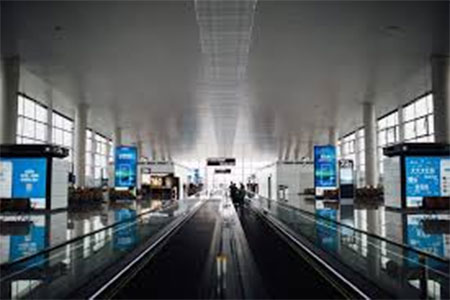
AI-Driven Creative Optimization
Artificial intelligence isn’t just a buzzword anymore. AI-powered tools are starting to automatically adjust ad creatives in real time. Think of campaigns where languages, price points, or even brand colors change dynamically depending on the city, flight route, or audience segment- all without human intervention. This means your messaging can stay hyper-relevant to whoever is walking by.
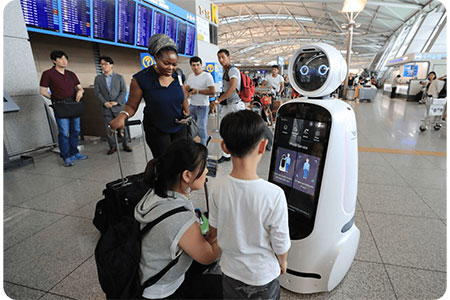
Touchless Interactive Screens
Interactive screens are getting an upgrade. Instead of tapping a touchscreen, travelers will be able to use voice commands or hand gestures to engage. These touch-free kiosks feel safer (especially after the pandemic) and create more engaging experiences, whether it’s a gesture-based game or a voice-activated info hub that doubles as an ad.

Sustainability Becomes Standard
Sustainability isn’t optional anymore. Airports and advertisers are leaning into greener choices, from energy-efficient LED screens that use up to 50% less power to biodegradable vinyl wraps. Many airport contracts and RFPs now expect brands to track carbon offsets and choose eco-friendly materials as a matter of course.
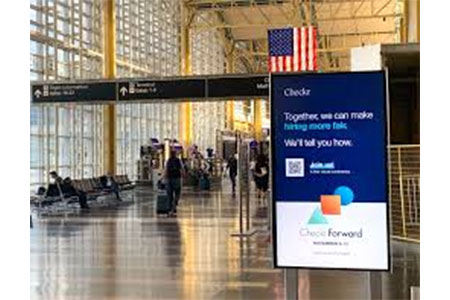
The Rise of Tier-2 Airports
India’s smaller city airports are turning into big opportunities. Passenger numbers are exploding in these hubs as connectivity improves. Take Trichy Airport, for example- its domestic traffic shot up 51% in April 2025 compared to last year. Airports like Bhubaneswar, Lucknow, and Trichy are seeing huge growth and offer brands fresh spaces with less advertising clutter and rapidly growing audiences.
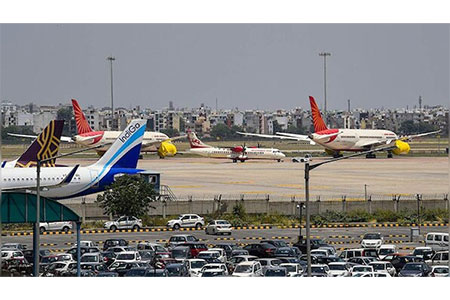
Choosing an Airport: Tier-1 vs. Tier-2 Growth Map
Should you pay more attention to the big city airports or the smaller regional ones? A mix would be best. Major Tier-1 airports have a lot of people and a lot of space, while high-growth Tier-2 airports are cheaper and have a wider reach. Take a look at the picture below.
| Rank | Airport (Code) | Passengers FY25 | YoY Growth | Tier |
|---|---|---|---|---|
| 1 | Delhi (DEL) | 79.3 million | +7.6% | 1 |
| 2 | Mumbai (BOM) | 55.1 million | +4.4% | 1 |
| 3 | Bengaluru (BLR) | 41.9 million | +11.6% | 1 |
| … | … | … | … | … |
| 7 | Ahmedabad (AMD) | 13.4 million | +14.8% | 2 |
| … | … | … | … | … |
| 10 | Goa (GOI) | 7.3 million | +5.7% | 2 |
Mini Case Studies That Moved the Needle
These real-world examples show just how powerful airport advertising can be when it’s done right:
FinTech Credit Card Launch- Winning High-Net-Worth Customers
Objective: Acquire premium credit card customers in India’s top metro cities.
Execution: Over two weeks, the brand ran a programmatic digital OOH blitz across departure terminals at Delhi (DEL) and Mumbai (BOM). To stay top of mind, they combined this with geo-fenced retargeting ads on Facebook and Instagram, targeting travelers within 5 km of each airport.
Outcome: The results were clear: a 24% increase in approved credit card applications in the cities with airport campaigns compared to control cities with no airport ads. The integrated approach delivered a 4.1× return on ad spend, outperforming standalone digital campaigns by a wide margin.
FMCG Duty-Free Pop-Up- Liquor Brand’s Festive Push
Objective: Drive more duty-free liquor sales during the busy Diwali shopping season.
Execution: The brand set up an experiential AR selfie booth and wrapped the baggage carousels at Goa Airport (GOI). Arriving travelers could take augmented reality selfies with the brand’s mascot while waiting for their luggage, then share their photos on social media to enter a festive giveaway.
Outcome: Duty-free sales jumped by about 32% compared to the previous month. The campaign generated roughly 18,000 user-generated posts, which spread organically across social platforms. Even better, the effective cost per click or engagement came down to ₹11, less than half the typical ₹25 CPC for standard digital display ads.
Airport-Media Campaign Checklist
Before your campaign takes off, use this checklist to make sure everything is lined up for success:
Define clear objectives
Be specific about what you want to achieve. Are you focused on brand awareness, generating leads, driving more footfall, or boosting sales? Decide on your primary goals and set your KPIs right at the start.
Select target airports
Choose airports strategically. Look at passenger demographics, traffic volume, and future growth potential. For example, you might combine a major metro hub with fast-growing Tier-2 cities to cover different audience segments.
Review rate cards and inventory
Research all available formats and pricing at the airports you have in mind. Try to lock in your ad inventory four to six weeks ahead so you can secure the best locations and avoid last-minute surprises.
Develop compelling creatives
Prepare a strong mix of creatives. Include static images, motion videos, and interactive AR if you can. Make sure your messaging feels relevant to each touchpoint along the traveler’s journey, whether it’s security, check-in, lounges, or boarding gates.
Submit for AAI and operator approvals
Send your creative materials for approval at least two weeks before your planned launch date. Be ready to make any changes if there are content restrictions or feedback from authorities.
Integrate digital retargeting
Plan a complementary digital strategy. Set up campaigns on Google, Meta, Amazon DSP, or other platforms, and use geo-fencing to retarget airport audiences after they see your ads in person.
Configure tracking tools
Implement Google Analytics 4, conversion pixels like Floodlight or Meta Offline Events, and create unique QR codes or promo codes so you can measure results accurately.
Launch and monitor daily
Once your campaign goes live, keep a close eye on everything. Review playback reports and any available footage to confirm your ads are running correctly. Make adjustments as needed, such as changing creative, tweaking frequency, or refining targeting based on early performance.
Measure and report results
After the campaign wraps up, compare outcomes against your benchmarks. Calculate your return on ad spend, analyze lift in key metrics compared to control regions, and gather insights to improve your next campaign.
By working through this checklist, you can feel confident you have covered all the details needed for a smooth, effective airport advertising rollout.
Why Excellent Publicity Is Your Flight Partner
Choosing the right airport media agency can make all the difference in how your campaign performs. Here’s what makes Excellent Publicity a trusted partner for brands across India:
Inventory Advantage
As one of India’s leading agencies, we have preferred agreements with more than 50 airports nationwide. This gives us access to last-minute slots, premium ad placements, and bulk-buy discounts that help you stretch your budget further without compromising on visibility.
Integrated Dashboard
We make reporting easy. Our unified dashboard pulls together all your data across digital out-of-home, Google, Meta, and CRM systems. You get a complete, real-time view of your campaign performance, from impressions and reach to conversions, all in one place.
Creative Localisation
Our in-house creative team can quickly adapt your ads for different regions. In less than 24 hours, we can translate and tailor your content into over 20 regional languages, ensuring your message feels relevant whether your audience is in Mumbai, Mangalore, or anywhere in between.
Proven ROI
In 2023 and 2024 alone, we successfully managed over 120 airport campaigns, achieving an average return on ad spend of 2.4 times. Our data-driven approach, combined with ongoing optimization, has consistently delivered strong results. If you would like, we are happy to share references and success stories to show how our work can help your brand grow.
Conclusion
With passenger numbers climbing and digital out-of-home technology evolving fast, airport advertising in India has become one of the most effective and efficient ways to connect with affluent, mobile-first consumers in 2025. By combining high-impact screens inside terminals with precise digital retargeting, brands can transform travelers’ downtime into real engagement and turn impressions into measurable results.
Ready to get started? Book a free strategy session with Excellent Publicity today. Within 48 hours, we will create a custom airport media plan tailored to your brand and objectives. Let’s work together to make your next campaign a first-class experience and take your marketing ROI to the next level.
FAQs
You should plan for a budget of around ₹5–₹8 lakh if you want to run a 4-week campaign on a single digital screen in a major airport. This will give your brand a solid baseline presence, for example, one prominent digital billboard in a metro airport for a month.
On average, you’ll need about 7–14 days to get your creative approved by AAI (Airports Authority of India), mainly for content compliance and security checks. If your ad is going into a privately operated airport, allow another 5 days or so. To be safe, plan for at least a 2-week lead time before you expect your campaign to go live.
Yes, you can. A growing number of Indian airports now support programmatic digital out-of-home (DOOH) buying. You can use platforms like Lemma, Moving Walls, Broadsign, or The Trade Desk to run campaigns across screens in 25+ airports. This works much like online advertising, with real-time bidding and precise audience targeting.

